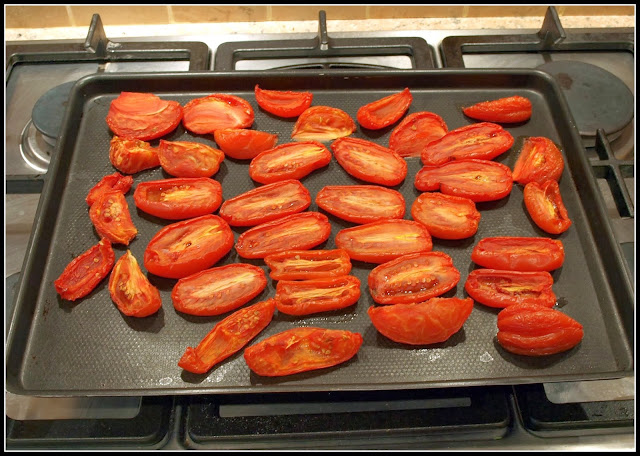Well, it's just about November, and we still haven't had any frost, so I'm continuing to harvest a few things from my garden.
One of those things was my first really decent "Garnet" Sweet Pepper.
About a month ago I had a couple of these ripen, but they had been attacked by some sort of bug and were not useable, so this is the only good one I have had so far. There are lots more on the plantsl, but they have proved to be very slow at ripening. Isn't it funny how getting one lovingly-nurtured and long-awaited good specimen sometimes seems so much more of an achievement than a glut of something that is easy and predictable?
I took down my "Cobra" climbing French Beans and their poles, on Saturday. There were lots of tiny pods on the plants still, but I wanted to take down the bean poles before we got hit by the first really bad storm of the Autumn. These last few pods are very small, and individually not fine specimens, but collectively they make a viable harvest. It amounted to just over 200g.
I also picked another batch of Brussels Sprouts:
The ones in my photo look (and are) fine - very nice tight sprouts - but unfortunately about a quarter of the ones I picked had been spoiled by maggots and were not edible. This is a real shame, because this particular crop is another long-awaited one, and the sprouts looked so good from a distance! Anyhow, the good ones still added up to 400g.
As usual I have also been picking chillis. The basket of them in the airing-cupboard is nearly full now.
As you can see, I'm still getting a few tomatoes. Those ones are "Sungold". There aren't many more to come, but I'm savouring every one. The vast hoard of tomatoes on the Dining-Room table is dwindling rapidly now, but we'll still be eating home-grown tomatoes in November, that's for sure.
The "Autumn Bliss" Raspberries continue to produce a trickle of ripe fruit. It's never enough to do anything much with, just sufficient for a garnish to a bowl of ice-cream or something.
To finish off my post for this
Harvest Monday, here's another photo of that "Garnet", alongside one of the "Cyclon" chillis. The "Garnet" is about 8 inches long.
I think next week I may be able to lift the first of my Parsnips. I wonder what they will be like...
*****************************************************************************
P.S. The big storm has thankfully not inflicted much damage on my garden. I did some damage-limitation work yesterday, such as adding additional ties to my brassica plants, and shoring-up various things with the big heavy pots that had previously held the tomato plants - like this:
The tomato pots really did a good job! I'm glad I hadn't got round to emptying them.
A couple of the potted Blueberry plants were toppled over by the wind, but the only real damage was a branch broken off one of my "Garnet" Sweet Pepper plants, so we got off very lightly indeed. I hope the same applies to anyone else who is reading this. Luckily I didn't have to go to work today. It would have been difficult to do so, since there has been serious disruption to the road and rail networks.



















































